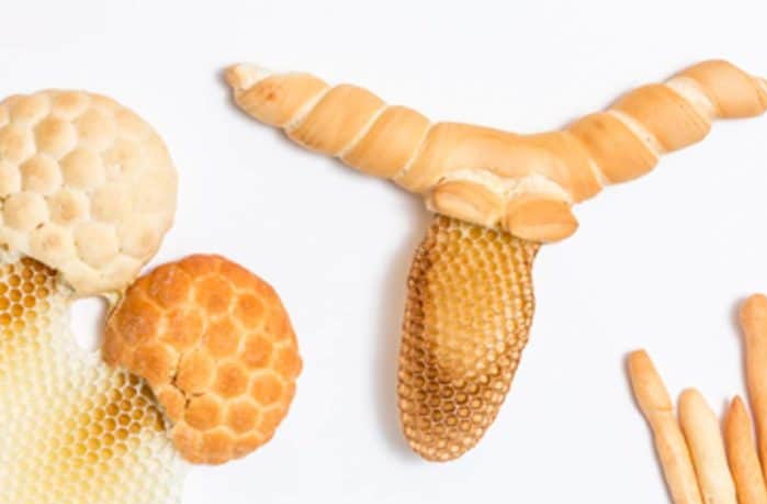Artists have had a long relationship with honey. Dating back more than 10,000 years, the Araña Caves (near present-day Valencia, Spain) are home to one of the first depictions of honey cultivation by a painter. Some might say that bees were the original architects, designing delectable structures where honey crystallizes into perfectly geometrical dwelling places for bees’ deposits. In fact, the Australian Sugarbag bee, in particular, creatively builds its nest in the same spiral pattern as the Milky Way.
Today, Honey Fingers, the Melbourne-based apiary run by architect Nic Dowse, carries the torch for artists interested in honey with a space for this growing community. Honey Fingers is a small-batch raw honey business as well as a creative studio, artist residency, and forum for musings on bees.
Though Dowse had been around beekeeping his whole life, his passion in the subject was sparked by studying animal-made architecture in university. Dowse not only is a beekeeper, but also a teacher of apiary techniques, often giving panel discussions and workshops through universities in Melbourne sharing his nonconventional processes with people of all ages and background. He writes poetry and creates installations using leftover honeycomb skeletons, which are shown in galleries throughout the city. He also holds a retreat which invites attendees to a weekend of writing, meandering, and afterwards, eating the venue in which sharing both in palate and prose take place.
This becomes particularly relevant in a time in which bees are dying at an alarming rate. In June 2018, two new bee-related books focused on what seems to be a fleeting symbiosis between bees and the stabilization of the food system.
“Beekeepers—especially small-scale, urban beekeepers—have a very important role to play in keeping a genetically-diverse, well cared for populations of bee colonies…There are quite a few people who joined the collective, learned about beekeeping, and then started their own apiaries,” Dowse says.
By creating a honey product that reflects the reality of what the bees were feeding on and seasonality (what is often called terroir), each batch has a distinctive flavor and can look different each season.
Beyond that, Honey Fingers’ goal is to break down the process of honey-making, bringing the sometimes insular farming community to a wider audience—in this case, to artists. They hope to empower everyone to learn more about how bees affect all processes of the food chain with creative problem-solving.
“I have quite a few hive hosts and beekeepers in their 70s who are really, really into bees and gardening. They grew up gardening and understand the connection we humans have to ecology and local food webs,” Dowse says. “And 20-somethings have a similar interest, but it comes from a different place—they have grown up in a world where food insecurity and the decline of the natural environment and ecosystems are very, very real and scary things…At first, the connection between artistic practice and beekeeping may seem odd, but when you are in the middle of a honey season, watching the honey come into the hive, watching the bees make collaborative art with you, and watching creative minds watching all of this—it makes perfect sense,” says Dowse.
The Honey Fingers’ model also seems to represent a growing number of food activism projects run by artists. For example, the appointment of James Beard-nominee and former executive chef at Mission Chinese, Angela Dimayuga, as Culinary Curator to the Standard Hotels International, indicates that the food world has become more open to interdisciplinary environments and conversations.
Back in the 1970s, Gordon Matta-Clark’s FOOD restaurant in New York’s SoHo supported a community of often starving artists with nutritious food—no matter what personal budget. Matta-Clark, as many might already know, was deeply involved in archiving the architecture of the Bronx.
And recently, at the 2018 Allied Media Conference hosted in Detroit, Michigan, FoodLab Detroit and the conference’s director, Ora Wise, created an experimental Dream Cafe, which was a restaurant/art project centered on transparency towards source of the food and those who grow it, collaborating with people like Food Book Fair and DeVonn Francis of Yardy, a performance artist and traveling chef.
This model of food activism through art has incredible potential, particularly in food security, and we can’t wait to see what kinds of new models emerge.
Photo courtesy of Delfino Legnani.





